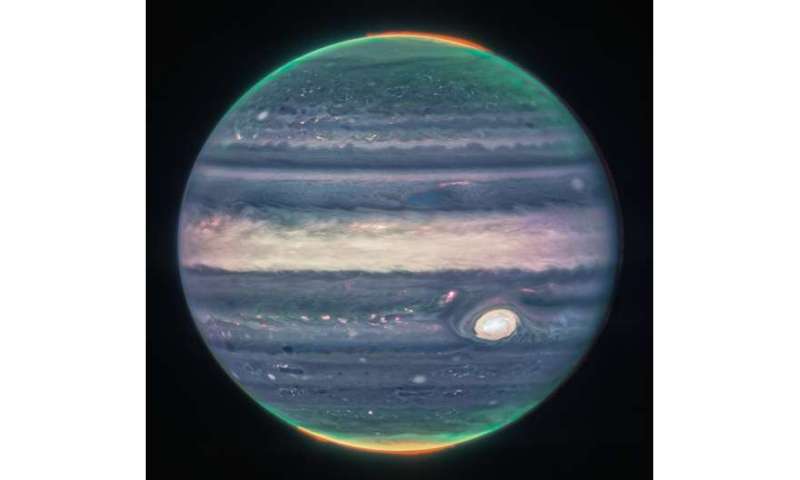Best of Last Week—New images of Jupiter, improving soccer playing in robots, news addiction can make you sick

It was a good week for space science as NASA released sharp, new images of Jupiter taken by the James Webb Telescope. The artificially colored images showed details such as fine filigree on the edges of colored bands surrounding the famous Great Red Spot and the auroras over the north and south poles. Also, an international team of researchers studying data sent back from the Mars rover Perseverance found some surprises in the first underground radar images sent back— inclined planes and stacked rocks. And a team at the University of California, also studying data from the Webb telescope, were able to make the first unequivocal detection of carbon dioxide in the atmosphere of an exoplanet.
In technology news, a team led by a group at MIT found that an aluminum-sulfur battery could provide low-cost backup storage for renewable energy sources. Also, a team with members from the University of California, Berkeley and Université de Montréal and Mila developed a hierarchical reinforcement learning framework to improve the soccer shooting skills of quadruped robots—deployed on the Unitree A1, the team hopes to gain a leg up on competition at RoboCup. And a team at Ecole Polytechnique Federale de Lausanne, discovered that certain materials can learn in ways similar to how the human brain learns—in working with vanadium dioxide, the group found it capable of remembering its own history. Also, a pair of mathematicians at MIT, Žiga Kos and Jörn Dunkel, suggested that liquid crystals could be used to create the building blocks for a new kind of computer.
In other news, a combined team from the University of Arizona and the University of California found that what older adults do while sitting in front of a TV affects their dementia risk—not moving at all, they found is worse than doing things like knitting or typing text messages. Also, a trio of researchers from Duke University, the University of Witwatersrand and North Carolina State University, respectively, announced that their study of ancient skulls sheds light on early humans interbreeding with Neandertals—DNA evidence showed that most of it happened in the Near East. And finally, a trio of researchers at Texas Tech University found that news addiction can be linked not only to poor mental well-being, but physical health, too—reading too much news can bring on anxiety, stress and feelings of being physical ill, they found.
© 2022 Science X Network